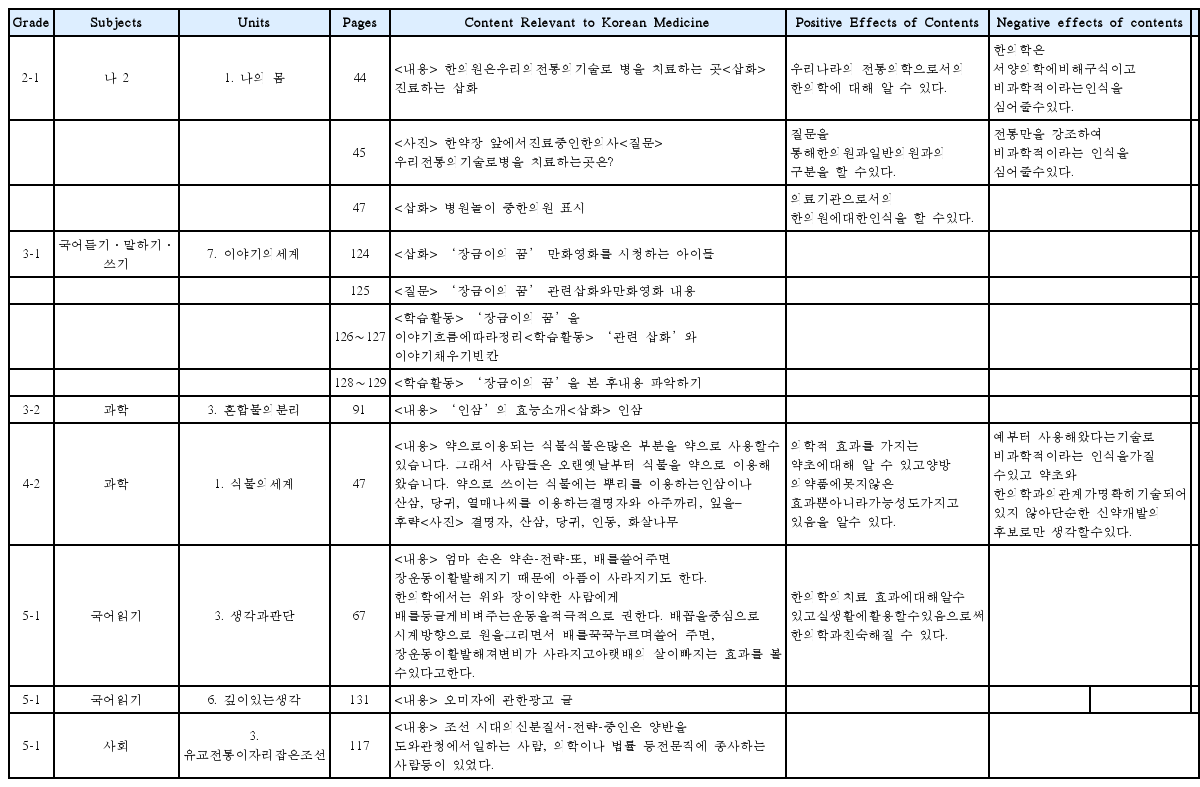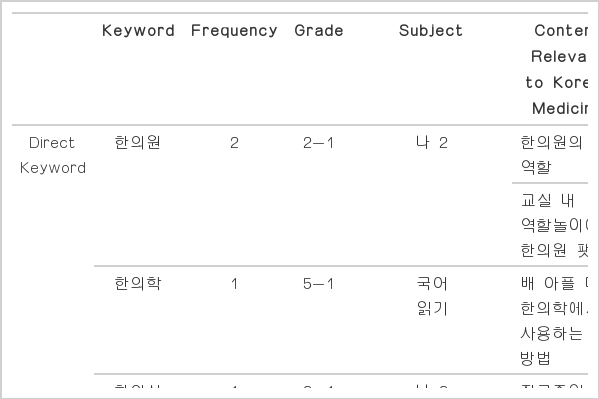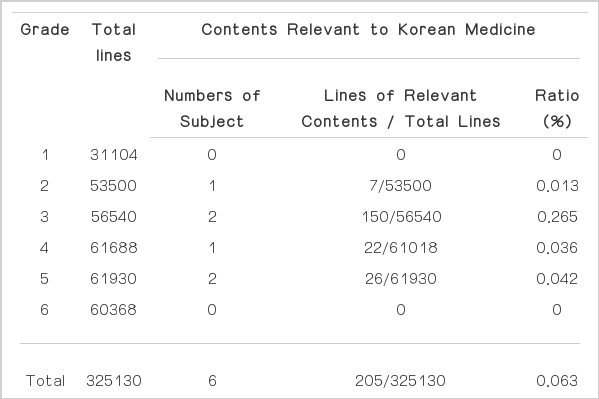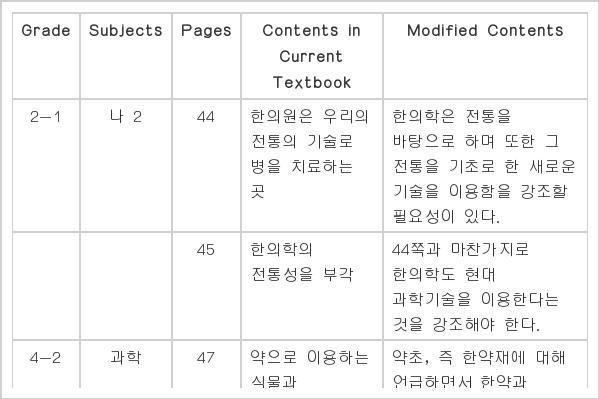The Analysis of Contents Relevant to Korean Medicine in Elementary School National Textbooks
Article information
Abstract
Objectives:
Elementary school national textbooks of 2013 were analyzed to examine the contents related to Korean medicine in the Korean elementary school curriculum.
Methods:
The contents related to Korean medicine were identified in the 118 elementary school national textbooks of 2013, and their proportion in the total textbooks was calculated. The Korean medicine-related contents were also analyzed.
Results:
There were twelve parts related to Korean medicine in seven chapters in six courses, and four directly related words and eight indirectly related words were found in twelve parts. The total number of lines for the contents related to Korean medicine were 205, which occupied 0.063% in the total elementary school national textbooks. The contents occupied 0.013% in the second grade, 0.265% in the third grade, 0.036% in the fourth grade, and 0.042% in the fifth grade.
Conclusion:
The results show that the coverage of Korean medicine in the elementary school national textbooks in 2013 does not provide enough information on Korean medicine. To help people get to know about Korean medicine and use it in the right way, it would be necessary to include more information about Korean medicine in textbooks, and continuous interest as well as research will be needed.




